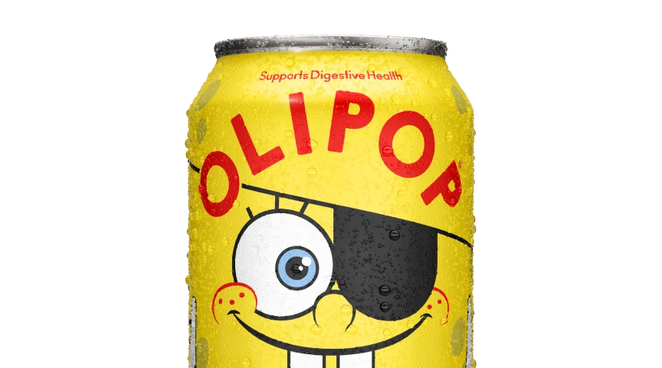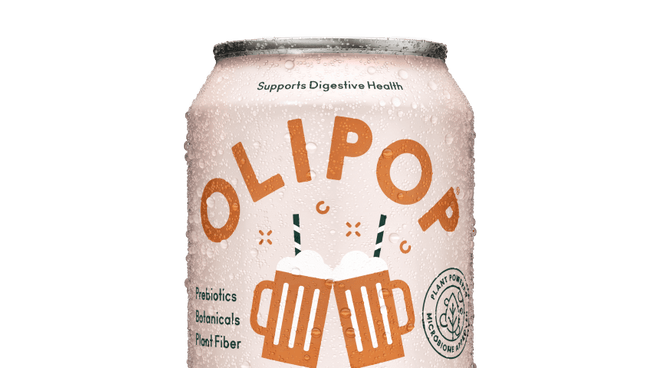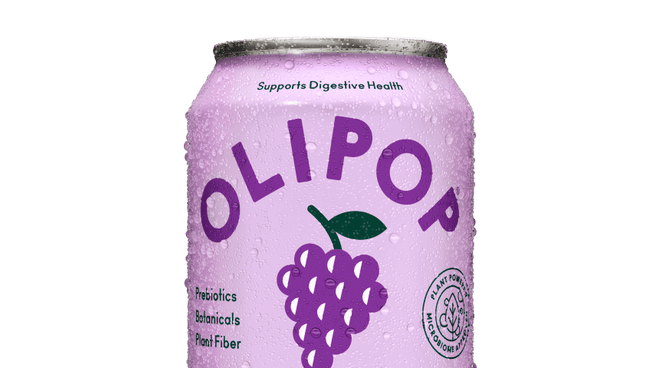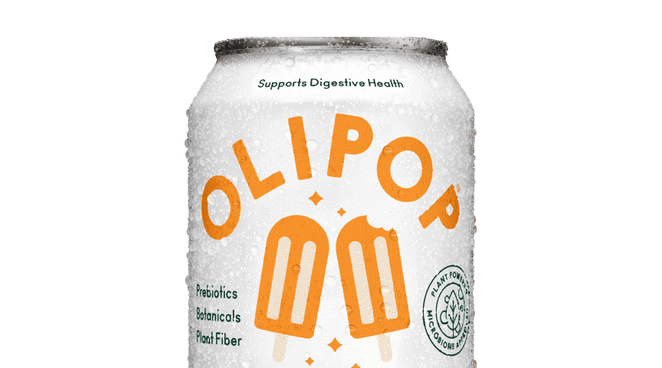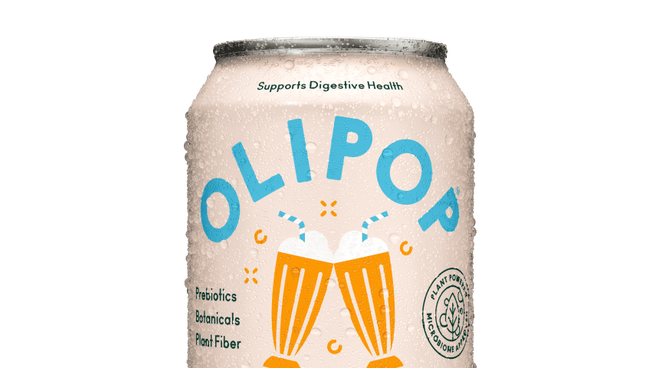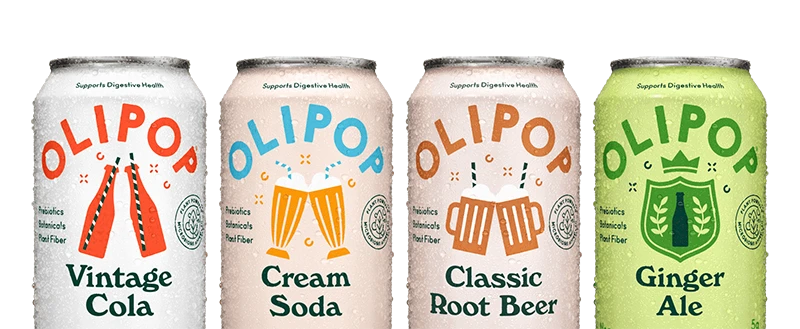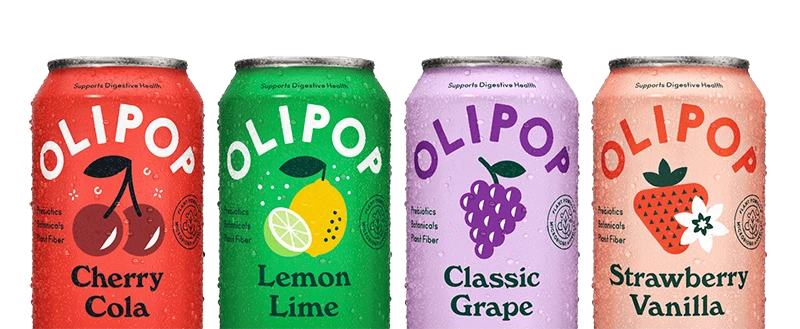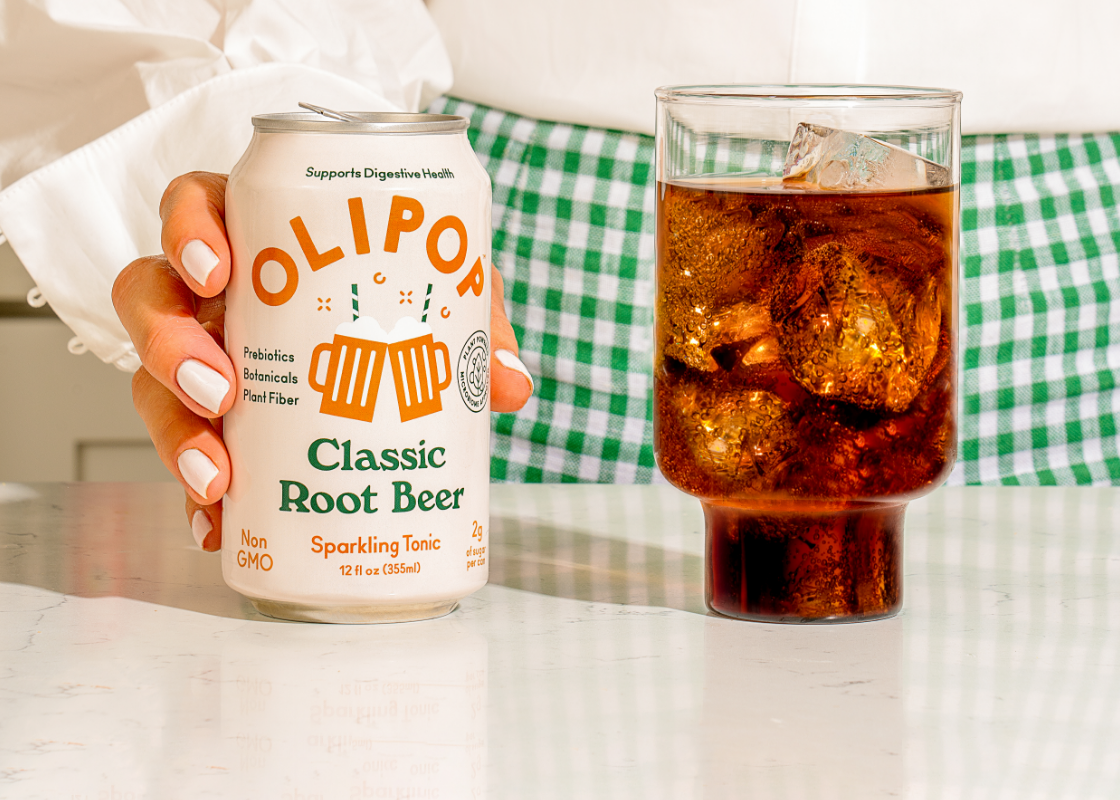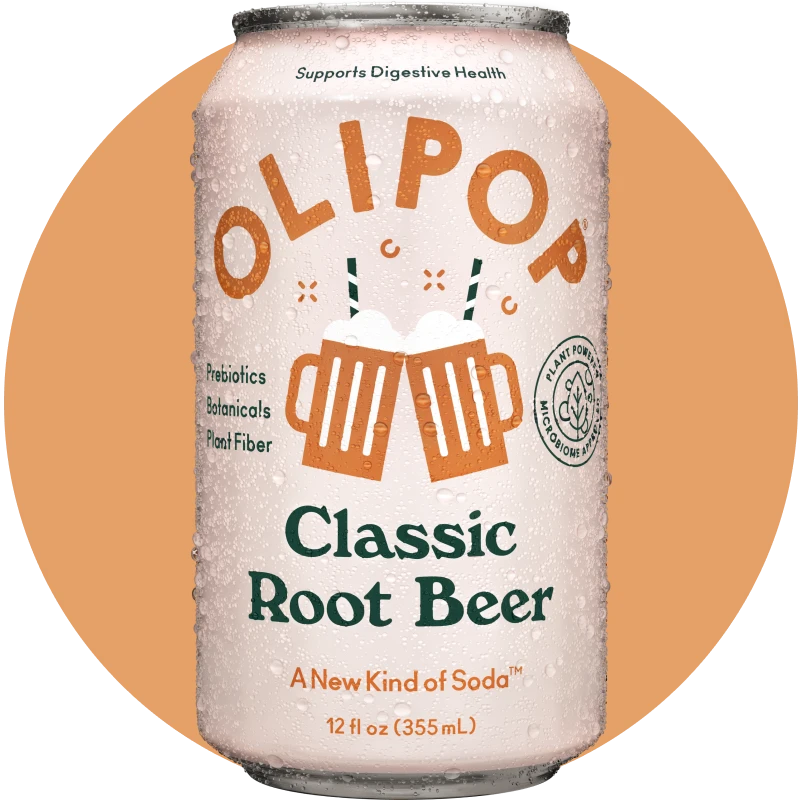Editor's Note: This article is reviewed by Lauren Manaker MS, RDN, LD, a registered dietitian and a paid contributor to OLIPOP. She specializes in digestive health and reviews OLIPOP content for scientific accuracy.
When comparing soda and beer, you can’t consider either a particularly healthy beverage. Both soda and beer have their drawbacks and you should consume them in moderation. But which one is “healthier”? Let’s tackle this debate:
Beer vs. Soda: Sugar
Soda
A 12-ounce can of standard soda contains about 39 grams of sugar. That's equal to about 9 teaspoons of sugar per can. The American Heart Association (AHA), recommends that women consume no more than 25 grams of sugar per day and men no more than 36 grams.1 This means that drinking one can of standard soda easily puts you above that recommended daily threshold — not to mention all the other sources of sugar you might be consuming throughout the day.
Regularly consuming high levels of added sugar increases your health risk for higher blood pressure, inflammation, weight gain, diabetes, and fatty liver disease. These are all linked to an increased risk of heart attack and stroke.2 And for most soda brands, the top ingredient in your can is high fructose corn syrup. Which, as far as sugar is concerned, is one of the worst.
Now you might be wondering, well what about diet soda? Diet sodas are artificially sweetened, which means they offer little to no added sugar. This makes them healthier than a high-sugar can of soda. However, some studies link diet sodas to potential negative health effects too, such as an increased risk of metabolic syndrome and cardiovascular disease.3 4 5
Beer
Beer contains a small amount of residual sugar from the fermentation process, but it’s not nearly as high as your sugary can of soda. Most of the sugar in beer comes from the natural sugars found in the grains used during the brewing process. During fermentation, yeast consumes much of the sugar to produce alcohol, so the final sugar content is relatively low. The remaining sugar contributes to the beer's flavor and body.6
On average, a standard 12-ounce serving of regular beer contains around 1 to 2 grams of sugar. Light beers may have slightly less sugar content, and some craft beers or specialty beers with added ingredients (like fruit beers) might have slightly higher sugar content.
The winner: Beer wins this round if we’re comparing it against high-sugar soda.
Beer vs. Soda: Calories
Soda
Soda and other sugar-sweetened beverages are some of the most non-nutritious products because they provide so many calories and virtually zero nutrients. Take a look at the back label of some of the top soda brands and you’ll find anywhere from 140 to 170 calories or more. And there’s absolutely nothing nutritious about those calories you’re consuming. Don’t believe us? Take a look at the ingredients section below.
Diet sodas, on the other hand, often have zero or minimal calories thanks to artificial and non-nutritive sweeteners like aspartame. So if calories are your concern, diet soda can help you cut back. However, just because something has zero calories doesn’t mean it’s the healthier choice. Having zero calories quite literally means that there is zero nutritional value in what you’re drinking. And the sweetness of a diet soda beverage could increase your appetite or craving for more sugar-flavored products and beverages, potentially leading to other high-calorie and low-nutrition choices throughout the day.
Beer
When it comes to calories, beer isn’t exactly shining bright in this category either. On average, a standard 12-ounce can of beer contains approximately 100 to 150 calories. But this varies depending on the type of beer and its alcohol content:7
- Light Beer: Light beers typically have lower alcohol content and fewer calories with around 90 to 100 calories per 12-ounce serving.
- Regular Beer: Standard or regular beers have moderate alcohol content and usually contain around 140 to 180 calories per 12-ounce serving.
- Craft Beer: Craft beers can have a wide range of alcohol content and flavor profiles, so their calorie content can vary significantly. On average, they may contain around 150 to 250 calories per 12-ounce serving.
- High-Alcohol Beers: Specialty or high-alcohol beers, such as some IPAs or stouts, may contain higher calorie content due to their increased alcohol and malt content. They can have anywhere from 200 to 350 calories per 12-ounce serving or more.
Keep in mind that these are approximate values, and the actual calorie content may vary based on the specific brand and recipe of the beer. But on the whole, beer is not going to be your best choice if calorie intake is a major concern.
The winner: Beer and soda are both losers here. Not only do they have high calorie counts but those calories aren’t doing much to support your health.
Beer vs. Soda: Ingredients
Soda
Traditional soda is a beverage crammed with questionable and controversial ingredients that do next to nothing for your health. Here are the ingredients you’ll find in a standard can of soda:
- High fructose corn syrup: A sweetener made from corn syrup that's processed to increase its fructose content. It is widely used in the food industry as a cheaper alternative to other types of sweeteners like sucrose, honey, and maple syrup.
- Cane sugar: Also known as table sugar, this sugar source comes from sugar cane and is often used in replacement of high fructose corn syrup in some soda brands.
- Carbonated water: Also known as sparkling water or fizzy water, this is water infused with carbon dioxide gas under pressure. This creates bubbles and carbonation in the water, giving soda the bubbly sensation you know and love.
- Caramel color: A food coloring added to a lot of sodas to create that familiar dark coloring you often find in a drink like root beer or cola.
- Citric acid: A common ingredient in sodas, along with other beverages and food items, because it works as both a preservative and flavoring agent.
- Phosphoric acid: A colorless and odorless phosphorus-containing acid that gives soda its tangy or tart flavor. It also helps protect the drink from unwanted bacteria growth.
- Sodium benzoate: An FDA-approved chemical preservative used by manufacturers to extend your soda’s shelf life and increase its freshness.
The sugar provides the flavor, the food coloring provides the color, and all the other ingredients are in there to preserve the taste or extend the shelf life. In other words, most soda contains a whole lot of sugar, food coloring, artificial ingredients… and nothing nutritional about it.
Beer
Beer is traditionally made from four primary ingredients:8
- Water: The main component of beer, making up the majority of its content. The quality and mineral composition of water can affect the taste and character of the final beer.
- Malt: Refers to germinated and dried cereal grains, predominantly barley. The malting process converts the starches in the grains into fermentable sugars, which are essential for the brewing process.
- Hops: The flowers of the hop plant. They contribute bitterness, flavor, and aroma to the beer. They also act as a natural preservative, extending the shelf life of the beer.
- Yeast: A microorganism that ferments the sugars in the malt, producing alcohol and carbon dioxide. Yeast plays a crucial role in converting the sweet wort (unfermented beer) into beer during the fermentation process.
These four ingredients form the basis of most beers. However, many craft brewers and some commercial breweries also use additional ingredients to create unique flavors and styles. These can include:8
- Adjuncts: Brewers use other grains like corn, rice, wheat, oats, or rye in addition to barley malt. These can alter the flavor, feel, and appearance of the beer.
- Fruits and spices: Some beers incorporate fruits, herbs, or spices to add distinct flavors and aromas.
- Sugars: Some recipes may include sugars (other than malt sugars) to enhance alcohol content or contribute to specific characteristics.
- Flavored extracts: Artificial or natural extracts create specific flavor profiles.
The specific combination of ingredients, as well as the brewing process, contribute to the wide variety of beer styles available today. But are these ingredients good for you? Although beer does contain some nutrients, it’s not a significant source when compared to other foods or beverages. For example, some beer contains trace amounts of minerals, such as potassium, magnesium, phosphorus, and selenium. But the levels of these minerals are incredibly low.
On the whole, beer is a source of empty calories just like soda. This means it provides energy without significant nutrients. It also contains alcohol, which has its own implications for your health as we’ll talk about in a later section below.
The winner: In terms of quality ingredients, we’ll go with beer for this one. But there are no winners when it comes to nutrition.
Beer vs. Soda: Satisfaction and Satiety
Soda
Soda, as well as other sugar-sweetened beverages, suppress the natural process that typically would occur after eating a well-balanced meal or snack. This process is “satiety” or more commonly defined as “the feeling of fullness you experience after a meal”.9 In an ideal scenario, if you feel full and satisfied, you're less likely to reach for snacks or beverages that add unwanted and extra calories to your diet. But with the consumption of sugar-sweetened beverages, your body compensates, leaving you feeling hungrier, not fuller.
Beer
Many beer drinkers would describe beer as a very filling beverage. This feeling of fullness often comes from the carbonation in the beer, which can create a bloating sensation. Additionally, beer is a beverage that contains a pretty high amount of calories and carbohydrates, so it can contribute to the feeling of satiety. But the presence of alcohol in beer can also affect your perception of fullness. Alcohol can increase appetite and reduce inhibitions, potentially leading to overeating or consuming more food than you really need.
The winner: Beer will most likely make you feel more full or bloated than a can of soda. But both increase your hunger drive and reduce your resistance to those not-so-good-for-you foods.
Beer vs. Soda: Acidity
Soda
Most sodas are acidic due to the presence of citric, phosphorus, and other acids. This carbonation gives sodas their fizziness, but it also increases the acidity of the beverage. The pH scale ranges from 0 to 14, with 7 being neutral. Values below 7 indicate acidity, while values above 7 indicate alkalinity. Most sodas have a pH between 2.5 and 4, making them significantly more acidic than water, which has a pH close to 7. The high acidity of soda could have several effects on the body, including:
- Dental health: The acid in soda can erode tooth enamel over time, leading to dental cavities and tooth sensitivity.
- Digestive health: Some people may experience acid reflux or heartburn after consuming acidic beverages like soda.
- Bone health: Some studies suggest that excessive consumption of acidic beverages may have a negative impact on bone health over time. The phosphoric acid may negatively impact bone health as well.10
Beer
Beer is also generally acidic. Like many carbonated beverages, beer contains carbonic acid, which forms when carbon dioxide (CO2) dissolves in water. The carbonation in beer gives it its characteristic fizziness and contributes to its acidity. In addition to carbonic acid, beer may also contain other acids that occur naturally during the brewing process. For example, during the malting and mashing stages, enzymes break down starches in the malted barley into fermentable sugars, producing acidic by-products.
The pH of beer can vary depending on the style and brewing process. But on average, most beers have a pH range of about 4 to 4.5, making them slightly acidic.11 The acidity can vary based on factors such as the type of malt, hop varieties used, and the fermentation process.
While beer is acidic, its acidity is generally considered mild compared to some other acidic beverages, like soda. The acidity in beer is not typically a significant health concern for most people when consumed in moderation.
The winner: Beer is the lower acidic beverage of the two.
Beer vs. Soda: Alcoholic Content
Soda
Although soda makes a great chaser or mixer, it does not naturally contain alcohol. That’s even the case for root beer!
Beer
Beer contains alcohol, which is a psychoactive substance that can impair judgment and coordination. Excessive alcohol consumption can lead to addiction, liver disease, and other health problems. Moderate alcohol consumption may have some potential health benefits, particularly for certain types of alcohol (like red wine) due to their polyphenol content. However, it's important to weigh these potential benefits against the risks associated with alcohol consumption.
As with any alcoholic beverage, it's essential to consume beer in moderation and be mindful of its effects on your health. If you have specific health concerns or dietary considerations, it's best to consult with a healthcare professional or a registered dietitian.
The winner: Depends on what you consider a win! But if you’re looking to avoid alcohol, soda is the obvious choice.
So, Is Soda Healthier Than Beer?
Although beer technically wins out in this grouping of categories, the truth is that neither traditional soda nor beer are "healthy" beverages. If you are looking for a smarter option, consider drinking water, unsweetened herbal tea, or (hint, hint) OLIPOP instead. But if you do choose to consume high-sugar soda or beer, do so in moderation and be mindful of the potential health risks associated with each beverage. And always consult with a healthcare professional if you have specific health concerns related to your beverage choices.
What if There Was a Better-for-You Alternative?
Let’s be real, there is no winner in this soda vs. beer debate. But what about OLIPOP? OLIPOP is a better-for-you soda formulated with high fiber and 2-5g of sugar. Here’s how we stack up in these categories:
- Sugar: Unlike a standard can of soda, OLIPOP features 2 to 5 grams of sugar per 12-ounce can.
- Calories: Our sodas contain 35 calories per 12-ounce serving. And those calories go to work with prebiotic fiber to support your digestive health.
- Ingredients: OLIPOP contains a proprietary blend called OLISMART of several unique botanicals, plant fibers, and prebiotics, each hand-picked for their distinct biome-supporting benefits. Our other ingredients include fruit juices and stevia for low-sugar sweetness.
- Satisfaction & satiety: OLIPOP tastes like the soda you grew up sipping, but with the added benefit of microbiome and digestive health support.
- Acidity: Our sodas are carbonated and may contain some level of acidity. However, compared to traditional sugary sodas or other highly acidic beverages, OLIPOP's sodas have a lower level of acidity.
- Alcoholic content: No alcohol here! But we do make a great mixer for your mocktail or cocktail…
While many other sodas have 39g of sugar or more and zero nutritional value, OLIPOP has 2-5 grams of sugar and a combination of plant fiber, prebiotics, and botanicals for both a sweet and gut-friendly taste. So, who’s the real winner here? We’ll let you be the judge.
Sources
- How much sugar is too much? (2023, May 10). www.heart.org. https://www.heart.org/en/healthy-living/healthy-eating/eat-smart/sugar/how-much-sugar-is-too-much
- Harvard Health. (2022, January 6). The sweet danger of sugar. https://www.health.harvard.edu/heart-health/the-sweet-danger-of-sugar
- Cheng Chen, “Comment to ‘Sugar-Sweetened Beverage and Diet Soda Consumption and the 7-Year Risk for Type 2 Diabetes Mellitus in Middle-Aged Japanese Men,’” European Journal of Nutrition 53, no. 4 (April 9, 2014): 1135–1135, https://doi.org/10.1007/s00394-014-0680-5
- McMillen, Matt. “Is Drinking Diet Soda a Health Risk?” Edited by Brunilda Nazario, WebMD, WebMD, 5 May 2017, www.webmd.com/diet/news/20170505/diet-soda-health-risks.
- Sad but True: Diet Sodas Are Bad for Your Health. (2023, May 19). Cleveland Clinic. https://health.clevelandclinic.org/3-reasons-you-should-kick-your-diet-soda-habit/
- Does beer have sugar? (2022, December 23). Unknown Brewing. https://www.unknownbrewing.com/how-much-sugar-is-in-beer/
- How Many Calories are in Beer? (2023, February 2). American Homebrewers Association. https://www.homebrewersassociation.org/how-to-brew/how-many-calories-are-in-beer/
- How to Make Beer: Beer Ingredients. (2023, April 6). American Homebrewers Association. https://www.homebrewersassociation.org/how-to-brew/homebrew-ingredients/
- Malik, V., & Hu, F. B. (2019). Sugar-Sweetened Beverages and Cardiometabolic Health: An update of the evidence. Nutrients, 11(8), 1840. https://doi.org/10.3390/nu11081840
- Chen, L., Liu, R., Zhao, Y., & Shi, Z. (2020). High Consumption of Soft Drinks Is Associated with an Increased Risk of Fracture: A 7-Year Follow-Up Study. Nutrients, 12(2), 530. https://doi.org/10.3390/nu12020530
- Understanding The PH Of Beer. (2023, January 11). Atlas Scientific. https://atlas-scientific.com/blog/ph-of-beer/
- Some sodas have over 40 grams of sugar, 140 to 170 calories, and little to no nutritional value. Although diet soda has no sugar and fewer calories, it’s still linked to potential negative health effects.
- Beer has little sugar, anywhere from 100 to 250 calories per serving, and ingredients including malt, hops, yeast, and sugar.
- OLIPOP offers an alternative to these beverages with high fiber and 2-5 grams of sugar.








